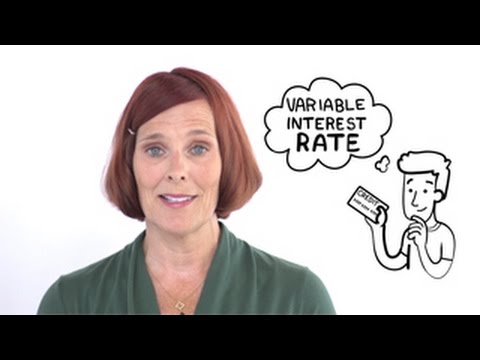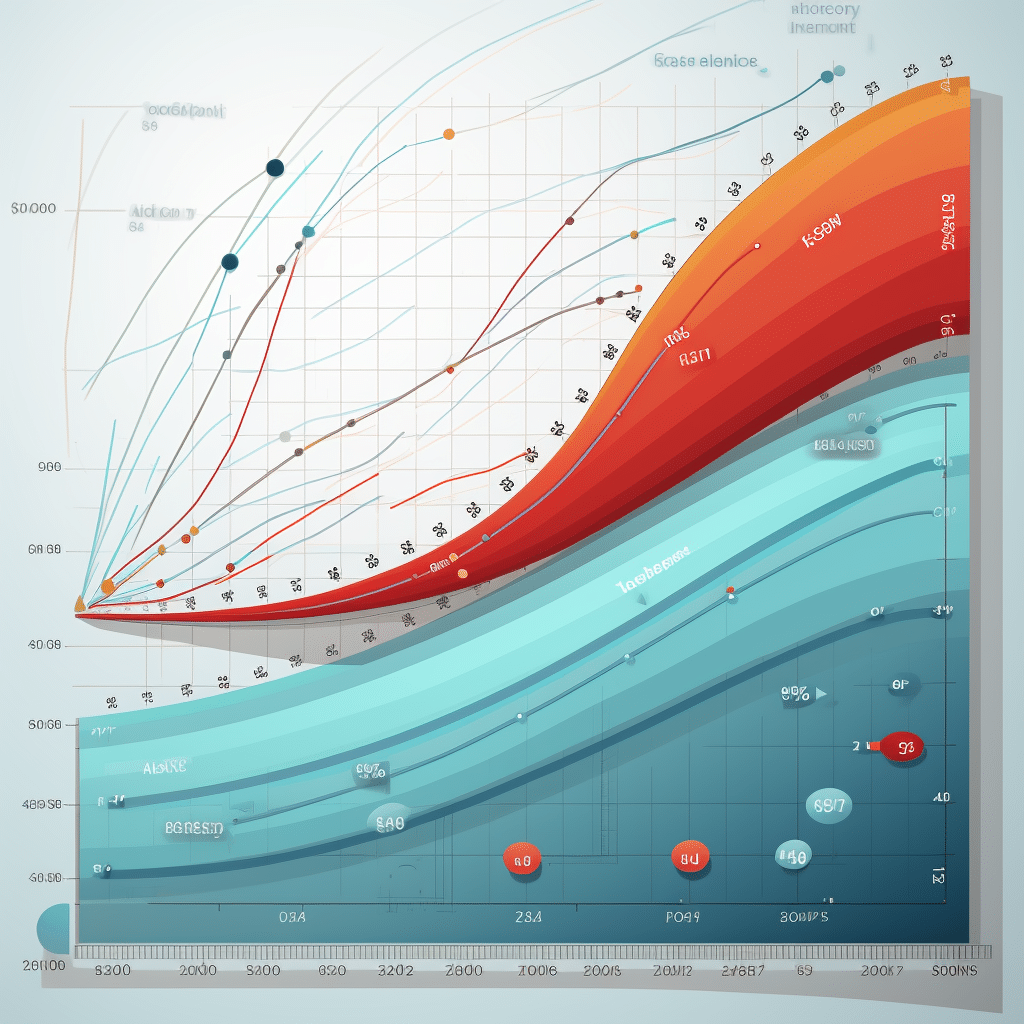Demystifying Variable Interest Rates in Today’s Mortgage Landscape
Let’s get down to brass tacks and talk about variable interest rate mortgages. Now, these fellas aren’t as straight-laced as their fixed-rate cousins, but that doesn’t mean they should be the black sheep of your financial family. Here’s the skinny: a variable interest rate is like a chameleon; it changes colors based on the environment – or in this case, it fluctuates based on an underlying benchmark interest rate or index, such as the federal fund rate or LIBOR.
Comparing variable rates to fixed ones is like comparing apples and oranges. While a fixed interest rate stays the same through thick and thin, a variable rate dances to the tune of the market. If you sense the market rates will go down, getting a variable rate could lead to your monthly payments shrinking like a cotton shirt in a hot wash. But if those rates climb, so could your payments, and they could reach higher than that one lightbulb you just can’t seem to change without a ladder.

Exposing Common Misconceptions Surrounding Variable Rate Mortgages
Here’s a myth that’s been doing the rounds: variable interest rates are as unpredictable as a game of ‘Pin the Tail on the Donkey’. But hold your horses, because the reality is that these loans often have rate caps. This means your rate’s not going to sky-rocket overnight more than the terms allow. And the fear that your rates will nosedive or skyrocket with market volatility? Well, while there’s a grain of truth here, let’s remember that’s not the whole story. Variable rates do their dance, but they don’t usually break into a full-on tango without giving you some warning.

| Aspect | Details |
|---|---|
| Definition | An interest rate that fluctuates over time in line with an underlying benchmark interest rate or index. |
| Also Known As | Adjustable rate, floating rate. |
| Based On | Underlying benchmark interest rate or index (e.g., federal fund rate, LIBOR). |
| Margin/Spread | Additional percentage added to the benchmark rate, determined by the lender. |
| Benefits | – Potential for lower interest rates during periods of declining rates. – Possible reduced monthly outgoings when rates decrease. |
| Risks | – Rates can increase, leading to higher payments. – Less predictability in financial planning due to fluctuating rates. |
| Suitable for | Borrowers willing to take the risk for potential savings, those expecting rates to decrease, or individuals with flexible budgets. |
| Common Products | Variable mortgage rates, variable rate credit cards, home equity lines of credit. |
| Fixed Rate Compare | – Fixed rates offer stability and predictability. – Rates & payments don’t change over the loan term. – Common in mortgages, auto loans. |
| When Variable is Better | When interest rates are expected to decrease, leading to potential savings. |
| Decision Factors | – Current economic conditions. – Individual financial stability. – Borrower’s risk tolerance. – Interest rate projections. |
The Evolution of Variable Interest Rate Products in 2024
Looking back over the past decade, we’ve seen variable interest rates ebb and flow like the tide. Innovations in lending and regulatory shifts have shaped the mortgage landscape, making variable rates more consumer-friendly than ever. Remember, folks, a stitch in time saves nine, and keeping up-to-date with these changes can save you a pretty penny.
Analyzing the True Costs of a Variable Interest Rate Mortgage
Now, let’s crunch some numbers. If you snag a variable interest rate that starts off low, you might feel like you’ve won the lottery. But remember, variable rates are a long game. Over the term of your mortgage, the rates might increase, depending on the economic weather. Let’s say the initial rate on a $300,000 mortgage is 3.5%, and it climbs to 5% over a few years. This hike could see your monthly payments go up by hundreds of dollars, a scenario you can flesh out with tools like Mortgage Rater’s calculate home equity loan.

Variable Rate Mortgages from the Lens of Industry Experts
To get a clear picture, I chatted with financial advisors and mortgage brokers who live and breathe these rates. This is the deal: while variable rates can be a smart play for some, they’re not the golden ticket for everyone. Real case studies show that folks who can ride the wave of variable rates and capitalize on low-interest periods can come out on top. But those who need the security of knowing exactly what they’ll be paying every month might find more solace in a fixed-rate scenario.

How Top Lenders Adjust Variable Rates: A Closer Look
Not all lenders are created equal, and neither are their policies for adjusting variable rates. Some might be as steady as a metronome, while others could be more reactive to market twitches. For example, a big fish like Baltimore/washington International Thurgood Marshall Airport might offer consistent rates with less fluctuation, reflecting their market stability and resources. It’s vital to keep an eagle eye on how your lender operates.
Decoding the Impact of Global Economic Trends on Variable Interest Rates
The financial world is like an intricate spider web – touch one strand, and the whole web jostles. Current economic trends, like those you might find spinning in the Google sphere, have the power to influence variable interest rates across the board, from Auckland to Atlanta. Keeping your finger on the pulse of the global economy can give you a heads-up on how rates are likely to trend.
Variable Rate Myths Versus Variable Rate Success Stories
Now, let’s set the record straight by contrasting myths with success stories from real folks who’ve navigated the variable rate ship through choppy and calm seas alike. These testimonials showcase how variable rates can work like a dream when handled with care and foresight.
Identifying Your Ideal Mortgage: Is a Variable Interest Rate Right for You?
Choosing between variable and fixed rates isn’t a one-size-fits-all deal. It’s like choosing your favorite Subway Sub Of The Day—what works for you might not tickle someone else’s taste buds. You’ve got to consider the size of your loan, the market conditions, and how much risk you’re willing to chow down on. Armed with strategies and tools like Mortgage Rater’s guides on How To calculate equity and What Is The equity, you can make a choice that fits your financial appetite.
Strategic Planning for Future Variable Interest Rate Fluctuations
Knowing that variable interest rates can fluctuate like the mood of a teenager, how do you prepare? Start by building a financial cushion that’s as comfy as your favorite chair and consider options like refinancing if you see dark clouds on the rate horizon. Just like in a game of chess, thinking two moves ahead can keep you out of checkmate.
Conclusion: The Rational Approach to Embracing a Variable Interest Rate Mortgage
Folks, we’ve exposed the myths, stripped them down bare, and looked behind the curtain of variable interest rates. By making an informed decision based on real data, personal goals, and an understanding of the market, you can turn what some call a financial boogeyman into an ally. Remember, knowledge is power – wield it like a lightsaber, and may the financial force be with you.
Debunking Variable Interest Rate Nightmares
Ever woken up in a cold sweat from a nightmare where you were drowning in debt because of a wild variable interest rate? Well, take a deep breath because most of what you’ve heard about variable interest rates is about as real as that dream where Your daughter Died – yikes, quite the scare but far from reality.
The Mythical Hydra of Rates
So, you’ve heard that a variable interest rate is like a many-headed beast, right? Chop one head off, and two more grow back, leading to an ever-increasing debt burden. Well, let’s shed some light on this spooky tale. Unlike the mythological creature, variable interest rates don’t just sprout higher numbers willy-nilly. They’re actually tied to something called an index – usually a financial indicator chosen by banks. The rate changes only when the index changes. So, if you’re thinking about a mortgage with a variable rate, it’s not the unpredictable monster people make it out to be.
The “Set It and Forget It” Misconception
Now, let’s tackle that old chestnut: “Once you get a mortgage with a variable interest rate, you’re locked in for life.” Not quite! In reality, many variable rate mortgages allow you to convert To a fixed rate during the life of the loan. That’s right; you’re not stuck with the ups and downs forever. If you begin feeling like Drea De Matteo’s character in “The Sopranos”—uncertain and looking for stability—you can opt for a fixed rate and sleep a little easier.
The Suddenly Soaring Payment Paranoia
Hold your horses there, partner! Are you picturing that variable interest rate suddenly shooting up faster than a rocket, making your monthly payment unaffordable? Let’s not get ahead of ourselves. Many variable rate loans have caps – both periodic and lifetime – that limit how much the interest rate and the monthly payment can increase. This ain’t the wild west. There are rules and protections in place.
High-Risk, High-Reward Gambit
Sure, riding the variable interest rate roller coaster can feel thrilling for some, with the prospect of rates going down and leading to lower payments. But hey, did you know this doesn’t have to be an all-or-nothing gamble? Some savvy homeowners use the potential savings from lower rates to pay off their mortgage faster or to manage other financial ventures. It’s like playing chess instead of rolling dice – a strategic move, not blind luck.
So don’t let those tall tales and phantoms of the night get to you. Variable interest rates are more misunderstood friend than foe. Just like deciphering the meaning behind a troublesome dream might bring you peace of mind, getting the real scoop on variable interest rates can turn a nightmare scenario into sweet dreams of financial savvy.
Remember, like any decision involving money, it pays to do your homework, and understanding the ins and outs of variable interest rates might just reveal opportunities you never knew existed. With a little know-how and strategy, you might just find that a variable interest rate doesn’t have to be a horror story—it could be your financial fairy tale.

Is a variable interest rate good?
Oh, the puzzling question of variable interest rates! Are they good? Well, it’s a bit like riding a rollercoaster – thrilling for some, stomach-churning for others. A variable interest rate can be a boon when rates dip, meaning you could pay less over time. But remember, it’s a gamble – rates can climb, pushing up payments.
Is it better to go variable or fixed?
Choosing between variable and fixed rates? Ah, the million-dollar question! It’s like deciding between a predictable, fixed-menu dinner or a mystery meal that could change in flavor. Fixed rates offer stability, but you might kick yourself if rates plunge. Variable rates could save you a bucket-load if rates nosedive, but they could also skyrocket, so brace yourself!
What is an example of a variable interest?
Here’s a straightforward example of variable interest for you. Imagine you’ve snagged a credit card with a variable interest rate starting at 5%. If the index it’s tied to jumps up by 2%, bad news – your rate follows the hike up to 7%. On the flip side, if that index takes a nosedive by 3%, it’s high fives all around ’cause you’re down to a nifty 2%.
How are variable interest rates calculated?
Calculating variable interest rates – it’s not rocket science, but there’s some math involved. These rates pivot on an index, like the prime rate. Add a certain percentage (the margin) set by the lender, and voilà, you’ve got your rate. Just keep an eye out; as the index shifts, so will your interest payments.
What is the downside of a variable rate?
The downside of a variable rate? It’s like playing financial hot potato – unpredictable and potentially scalding. Your rate could go up, sending your monthly payments through the roof, which might give your budget a serious case of the hiccups.
What is the biggest downside to variable rate loans?
The biggest downside to variable rate loans is the uncertainty – it’s like you’re sailing in choppy financial waters without a life jacket. Rates can spike unexpectedly, making your repayments more than your wallet signed up for.
Should I switch from variable to fixed rate?
Wondering if you should switch from variable to fixed rate? Well, if you’re feeling jittery about market fluctuations or if rates are low and you want to lock ’em in, a switch might just be your financial safety net. Just be mindful of any fees though!
How high can a variable interest rate go?
How high can a variable interest rate go? In theory, it’s like a kite on a windy day – it can soar pretty high. Most loans have a cap, but it’s crucial to know what it is. You don’t want to be caught off-guard if your rate skyrockets.
Can you switch from variable to fixed?
Can you switch from variable to fixed? Sure thing! It’s like changing your order before the food comes out. Most lenders will let you switch, but beware – they might charge you for the chef’s trouble.
How often do variable interest rates change?
How often do variable interest rates change? Well, it’s a bit like the weather – they can change with the seasons or when the financial winds shift. Typically, they could adjust monthly, quarterly, semiannually, or annually – depends on the loan’s terms.
What are the pros and cons of variable rates?
Pros of variable rates – they could save you a bundle if rates plummet. Cons? You’re rolling the dice, which could turn your budget upside down if rates rise. It’s like financial weather – unpredictable.
What is the standard variable rate?
The standard variable rate is the bank’s basic rate, without any discounts or deals. Think of it as the full-priced ticket at a movie theater – no matinee specials or senior discounts.
Do variable interest rates ever go down?
Do variable interest rates ever go down? Yes siree! They can drop just like temperatures in autumn. But remember, they can also rise like a hot air balloon on a sunny day. It’s all about timing and a bit of luck.
What are the risks of taking a variable rate loan?
Taking a variable rate loan is like surfing – you could ride a wave of low payments or wipe out if rates shoot up. It’s all about your appetite for risk and ability to swim with the tide.
What is the current prime rate?
The current prime rate? That’s like asking for today’s weather forecast – it’s always changing. You’ll have to check with the latest financial reports for that golden number.
What are the pros and cons of variable rates?
Again, the pros and cons of variable rates swing like a pendulum – they offer potential savings but carry the risk of payments that can inflate quicker than a party balloon.
Why would anyone get a variable interest rate?
Why get a variable interest rate? If you’re a betting person and reckon rates are headed south, or if you just want the initial lower rate, it could be your golden ticket. But keep your fingers crossed rates play nice.
Is 20% variable APR good?
Is 20% variable APR good? Whoa, Nelly! That’s on the steep side, like climbing a financial Everest. Unless you’re planning on paying off your balance quickly or you’re expecting rates to slide down, you might want a safety rope.
Do variable interest rates ever go down?
Yes, variable interest rates can take a nosedive. It’s not just wishful thinking – they can fall just as surely as leaves from a tree. But don’t bank on it; like the stock market, they’re as unpredictable as a cat on a hot tin roof.



